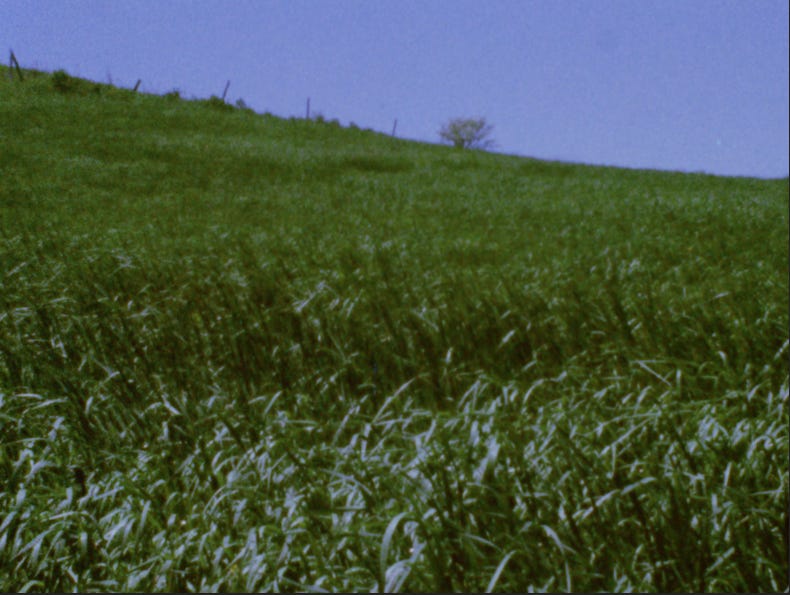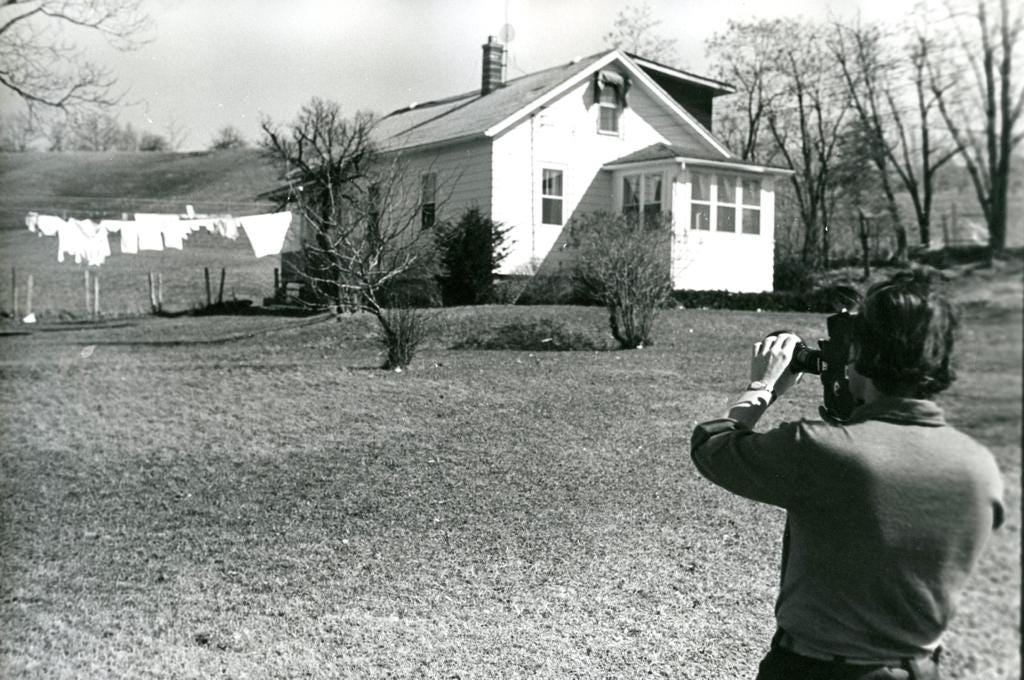Early Access — 'A History of the Dividing Line: Larry Gottheim’s 'Horizons' (1973)'
by Michael Sicinski
Horizons is a pivotal work in Larry Gottheim’s filmmaking career, for a number of reasons. After having made seven short films, Horizons was Gottheim’s first feature-length effort. In many respects it is the summation of certain tendencies in the first part of Gottheim’s career, even as it introduces strategies that will define the newer works to come. Gottheim retroactively designated Horizons as the first part of his four-feature suite Elective Affinities, suggesting that it offered a gateway for understanding the major precepts of this second phase of production.
This is particularly noteworthy because unlike the following three Elective Affinities films – Mouches Volantes (1976), Four Shadows (1978), and Tree of Knowledge (1980) – Horizons is a silent film. Even more to the point, the three subsequent films find Gottheim experimenting quite purposefully with the use of sound and the relationships between sound and image. This emphasizes the compositional significance of inaugurating the suite with 75 minutes of pristine silence.
But what defines Horizons is its hybridity, the way it continues several of the formal strategies of his six previous silent films. The best known of those films tended to fixate on a particular space or object in order to allow it to articulate itself across time. Fog Line (1970), for example, is a single shot from a fixed camera position, showing the fog gradually lifting from an upstate New York landscape. In addition to alluding to photography itself – the image slowly “developing” onscreen – Fog Line allows painterly flatness to evolve into cinematic depth, with expansive features of the landscape (hills, fields, telephone wires) to morph in real time, from broad swaths of tone and texture into representational space.
Gottheim’s intensive focus on a single location is most fully elaborated in Barn Rushes (1971). A series of right-to-left tracking shots taken from a moving car, the film presents images of one locale – a decaying wooden barn in a field – in dozens of visual configurations. Gottheim shoots at various times of day, with radically different available light. He shoots in different weather conditions. And he shoots the barn and field at various points of the year, allowing the changing of the seasons to envelop the barn. This single structure takes on a multitude of distinct characteristics, based on the timbre of the sky, the lushness of the field, and even the intensity of light peering through the boards of the barn.
Barn Rushes is a study of variance through repetition, showing that any given shot’s formal meaning is established by its relation to other such shots. From there, Gottheim turned his procedure inside out. Instead of using a single location as his basis, describing that location by observing change over time, Horizons uses time itself as the organizational basis of the film. It is a landscape film consisting of four movements, each corresponding to the four seasons. Moreover, the number of shots in sequence inversely corresponds to the length of daylight hours during that season. Summer is first, with two-shot sequences (divided by green leader); then autumn, with four-shot sequences (divided by red leader); winter, also with four-shot sequences (blue leader); and finally spring, featuring three-shot sequences (yellow leader).
Many specific locations recur throughout Horizons, but the editing works against any sense of spatial adjacency. Instead, Gottheim asks us to observe relationships within the groups of landscapes that he has assembled. Rather than taking a given location as axiomatic, Horizons organizes our perception quite deliberately, with Gottheim treating each passage of landscape film as a unique formal event with its own particular forms and concepts. Where the earlier films were somewhat ontological, this one is fictive, in the sense that every relationship in the film is forged by Gottheim, to bring out connections that, without montage, would simply not exist.
Gottheim treats the horizon line as a way to divide the frame, and while many shots are expectedly horizontal and Rothko-like, others tilt and warp the dividing line, showing hills, curved roads, barriers and embankments, or close-ups of roadside weeds that produce a “dotted” horizon line. Using this highly variable baseline, Gottheim creates groups of shots that dialectically reveal a variety of elements. Some of these relationships are formal. There are pairs, triads, and tetrads that emphasize color, tone, shape, and density. Some play stillness against movement, or slow movement against fast. Some show the horizon high in the frame, others low.
Then there are groups of shots that focus on observable spatial content: relative fullness or emptiness; flat or hilly; exterior vs. interior; flora in the foreground, middleground, or background; presence or absence of people or animals; and so on. Several sequences move us across, or into, the depicted scene, and while this may seem a purely formal matter – Gottheim’s decisions regarding camera movement – they also speak to the organization of the spaces themselves, whether they are open fields, highways, or forests. And still other edited groups suggest conceptual relationships. For example, several shots of clothes on a line are followed by sheep in a field, offering a Vertovian deconstruction of manufacture, from finished product back to the raw wool.
Horizons is a film with a structure, but it is not really a structural film. Within the overall container of the calendar year, Gottheim produces unexpected micro-events by organizing the landscape material into discrete cells. Although one could probably chart entire matrices of connections across the film, this is not necessarily how it asked to be watched. Instead, Horizons meets us within the seasons, a time frame all living things have in common. Inside that temporal arc, Gottheim offers small, individual bursts of observation and surprise. It is a map of casual noticing, a year filled with sudden, epiphanic conjunctions of earth and sky.




